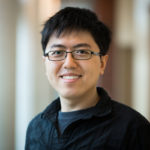Jintai Ding — University of Cincinnati
Blockchain technology is now going through explosive development with the aim to develop a new generation of revolutionary financial technology. The most successful example is new digital currency bitcoin. The fundamental building block in blochchain technology is actually cryptographic algorithms, which is why bistcoin is actually called a cryptocurrency. The main cryptographic algorithms used in blockchain technology are hash functions and
elliptic curve digital signatures. As we all know, quantum computers are not such a significant threat to the security of Hash functions but it can be fatal to the elliptic curve digital signatures. In this presentation, we will first show how the quantum computers can threat the security of blockchain technology, in particular, why the existing blockchain technology used in bitcoins can not fundamentally avoid such a practical attack. Then we will explain the challenges we will face if if we just plug in existing post-quantum cryptographic solutions as a drop-in to replace the existing elliptic curve signatures, in particular, the key size problem and a few others. In the end, we will present some of the new solutions we have been developing to deal with these fundamental problems including a new type of proof of work algorithms, which, we believe, provide very viable solutions for the future long term secure blockchain technology.




